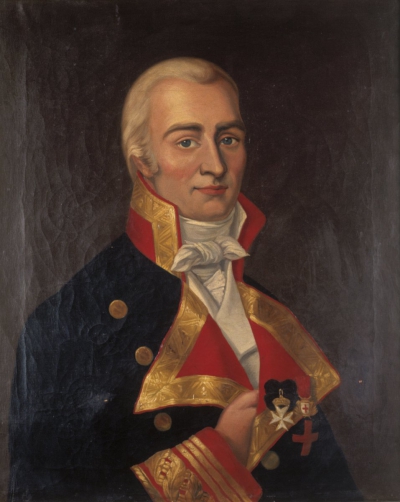The Viceroyalty of the Ro de la Plata (Spanish: Virreinato del Ro de la Plata or Spanish: Virreinato de las Provincias del Ro de la Plata) meaning "River of the Silver", also called "Viceroyalty of the River Plate" in some scholarly writings, in southern South America, was the last to be organized and also the shortest-lived of the Viceroyalties of the Spanish Empire in the Americas. The name "Provincias del Ro de la Plata" was formally adopted in 1810 during the Cortes of Cdiz to designate the Viceroyalty of the Ro de la PlataThe Viceroyalty was established in 1776 from several former Viceroyalty of Per dependencies that mainly extended over the Ro de la Plata Basin, roughly the present-day territories of Argentina, Chile, Bolivia, Paraguay and Uruguay, extending inland from the Atlantic Coast. The colony of Spanish Guinea (present-day Equatorial Guinea) also depended administratively on the Viceroyalty of Rio de la Plata. Buenos Aires, located on the western shore of the Ro de la Plata estuary flowing into the Atlantic Ocean, opposite the Portuguese outpost of Colonia del Sacramento, was chosen as the capital. Usually considered one of the late Bourbon Reforms, the organization of this viceroyalty was motivated on both commercial grounds (Buenos Aires was by then a major spot for illegal trade), as well as on security concerns brought about by the growing interest of competing foreign powers in the area. The Spanish Crown wanted to protect its territory against Great Britain and the Kingdom of Portugal.
But these Enlightenment reforms proved counterproductive, or perhaps too late, to quell the colonies' demands. The entire history of this Viceroyalty was marked by growing domestic unrest and political instability. Between 1780 and 1782, the Rebellion of Tpac Amaru II inspired a violent Aymara-led revolt across the Upper Peru highlands, demonstrating the great resentment against colonial authorities by both the mestizo and indigenous populations. Twenty-five years later, the Criollos, native-born people of Spanish descent, successfully defended against two successive British attempts to conquer Buenos Aires and Montevideo. This enhanced their sense of autonomy and power at a time when Spanish troops were unable to help.
In 1809, the Criollo elite revolted against colonial authorities at La Paz and Chuquisaca, establishing revolutionary governments or juntas. Although short-lived, retroversion of the sovereignty to the people provided a theoretical basis for the legitimacy of the locally based governments (temporarily in the absence of a legitimate king in Spain). These events proved decisive at the 1810 May Revolution events deposing Viceroy Cisneros at Buenos Aires.
The name "Provincias del Ro de la Plata" was formally adopted in 1810 during the Cortes of Cdiz to designate the Viceroyalty based on popular sovereignty. The revolution in Buenos Aires spread across the Spanish Provincias del Ro de la Plata, against the resistance of Paraguay (which declared itself an independent nation in 1811) and the Upper Peru (which remained controlled by royalist troops from Lima, and was eventually re-incorporated into the Viceroyalty of Peru). Meanwhile, the Governor of Montevideo Francisco Javier de Elo, appointed as a new "Viceroy" by the Spanish Government in 1811, declared the Buenos Aires Junta seditious. However, after being defeated at Las Piedras, he retained control only of Colonia del Sacramento and Montevideo. He departed by ship to Spain on 18 November and resigned in January 1812. By 1814, as the revolutionary patriots entered Montevideo, following a two-year-long siege. The Viceroyalty was disestablished in 1825 as Spanish political entity with the fall of Upper Peru with the death of the last Viceroy Pedro Antonio Olaeta.
Santiago Antonio María de Liniers y Bremond, 1st Count of Buenos Aires, KOM, OM (July 25, 1753 – August 26, 1810) was a French officer in the Spanish military service, and a viceroy of the Spanish colonies of the Viceroyalty of the River Plate. Although born Jacques de Liniers in France, he is more widely known by the Spanish form of his name, Santiago de Liniers.
He was popularly regarded as the hero of the reconquest of Buenos Aires after the first British invasion of the River Plate. As a result of his success, he was appointed as viceroy, replacing Rafael de Sobremonte. It was unprecedented for a viceroy to be replaced without the King's direct intervention. But he was confirmed in office by Charles IV of Spain.
He defended the settlement against a second British invasion and a mutiny that sought to replace him. He was replaced in 1809 by Baltasar Hidalgo de Cisneros, appointed as viceroy by the Junta of Seville, and retired from public activity. But when the May Revolution took place, Liniers decided to come out of his retirement and organized a monarchist uprising in Córdoba. Liniers was forced to flee, but was eventually captured, and executed without trial.

1810Aug, 26
The former viceroy Santiago de Liniers of the Viceroyalty of the Río de la Plata is executed after the defeat of his counter-revolution.
Choose Another Date
Events on 1810
- 4Feb
Guadeloupe
The Royal Navy seizes Guadeloupe. - 23Jun
Pacific Fur Company
John Jacob Astor forms the Pacific Fur Company. - 27Aug
Battle of Grand Port
Napoleonic Wars: The French Navy defeats the British Royal Navy, preventing them from taking the harbour of Grand Port on Île de France. - 16Sep
Mexican War of Independence
With the Grito de Dolores, Father Miguel Hidalgo begins Mexico's fight for independence from Spain. - 27Oct
West Florida
United States annexes the former Spanish colony of West Florida.

 English
English  español
español  français
français  português
português  русский
русский  العربية
العربية  简体中文
简体中文 